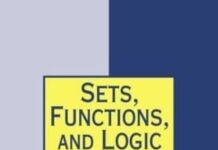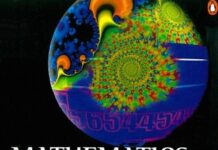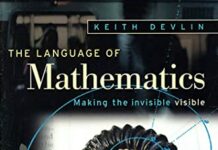
Ebook Info
- Published: 2011
- Number of pages: 181 pages
- Format: PDF
- File Size: 0.91 MB
- Authors: Keith Devlin
Description
In 1202, a 32-year old Italian finished one of the most influential books of all time, which introduced modern arithmetic to Western Europe. Devised in India in the 7th and 8th centuries and brought to North Africa by Muslim traders, the Hindu-Arabic system helped transform the West into the dominant force in science, technology, and commerce, leaving behind Muslim cultures which had long known it but had failed to see its potential.The young Italian, Leonardo of Pisa (better known today as Fibonacci), had learned the Hindu number system when he traveled to North Africa with his father, a customs agent. The book he created was Liber abbaci, the “Book of Calculation,” and the revolution that followed its publication was enormous. Arithmetic made it possible for ordinary people to buy and sell goods, convert currencies, and keep accurate records of possessions more readily than ever before. Liber abbaci’s publication led directly to large-scale international commerce and the scientific revolution of the Renaissance.Yet despite the ubiquity of his discoveries, Leonardo of Pisa remains an enigma. His name is best known today in association with an exercise in Liber abbaci whose solution gives rise to a sequence of numbers–the Fibonacci sequence–used by some to predict the rise and fall of financial markets, and evident in myriad biological structures.One of the great math popularizers of our time, Keith Devlin recreates the life and enduring legacy of an overlooked genius, and in the process makes clear how central numbers and mathematics are to our daily lives.
User’s Reviews
Reviews from Amazon users which were colected at the time this book was published on the website:
⭐No one needs to be informed that we have been through a calculating revolution in the past few decades, with a computer seeming to be on everyone’s desk and in everyone’s pocket. This particular calculating revolution, though, has been just one in a series, starting with notching tally marks on a bone around 35,000 years ago. Just as we take computers for granted now, so also we take for granted 0, 1, 2, and all the rest, but those are inventions as much as computers are, and they were a revolution in their time. It is a revolution that can be credited to a mathematician who is more famous for popularizing (he didn’t invent) a series of numbers that bears his name, Fibonacci, but he now gets credit for introducing Arabic numbers to Europe in _The Man of Numbers: Fibonacci’s Arithmetic Revolution_ (Walker & Company) by Keith Devlin, a mathematician who is well known as “The Math Guy” on NPR. Fibonacci didn’t invent Arabic numbers, of course, and they are so much better a calculating system than the Roman numerals that preceded them that they would have been adopted eventually, but Fibonacci made it happen. Devlin’s fascinating account shows how he did it, and how he didn’t get credit for it, and how we now know him to be one of the most influential mathematicians who ever lived.Although Devlin’s book is supposed to be about its title character, it isn’t a biography. Unless some librarian discovers a long-lost manuscript someday, Fibonacci will never have a biography. We know a little about him and his influences, all of which Devlin tells us, but details like his place and date of birth and death, family life, or what he looked like just don’t exist. Fibonacci’s father, a merchant, took him to north Africa when the boy was fifteen. There, he learned the Arabic numbers and spent a decade in training from mathematicians. After he returned to Pisa, he published his masterwork in 1202, _Liber abbaci_, “Book of Calculation,” a 600-page introduction to a better way of working with numbers. The book was not addressed to mathematicians, but to merchants. Fibonacci showed how what he called the “Indian figures” could be used to write any number, the ease with which they could perform the four basic calculator functions, how fractions could be used, how square and cube roots could be taken, and more. Quickly a merchant who insisted on using Roman numerals and counting boards was surpassed in efficiency by those who mastered the new system. The book was an instant success, so that Fibonacci issued different versions of it, and also others got into the act. In the next century, maybe a thousand or more similar manuscripts were written in Italian vernacular on the same themes. Textual analysis of these works all show that they were clearly beholden to Fibonacci’s original.In a final chapter, Devlin writes about the Fibonacci Numbers; if you know Fibonacci’s name, it ought to be for the Arabic numbers you see every day, but probably it is due to a little problem he put into _Liber abbaci_, about rabbits who breed through generations, and how to count the number of pairs in each generation. It is the series 1, 1, 2, 3, 5, 8, 13, and so on, each number being the sum of the pair preceding it. It has remarkable mathematical properties, and the numbers show up in nature with surprising frequency. Fibonacci, however, didn’t originate the series, and his name was attached to it only in the 1870s. They are interesting in their own right, but they aren’t really Fibonacci’s. Appreciating Fibonacci for his real achievement is the aim of this book, and Devlin presents a convincing argument to show that Fibonacci did nothing less than start the modern arithmetic revolution.
⭐Let’s be honest – most people hate math. They not only do not like doing math, they dislike everything about math. So why would anyone waste their leisure time reading about math? Well, there is more to this book than just math. How about a little history? Very little is known about the life of the man we now refer to as Fibonacci. He was born Leonardo Bonacci in Pisa, Italy, around 1170 AD. Leonardo was the son of a customs agent and spent some time interacting with Muslim merchants, where he is thought to have learned the basics of the Hindu-Arabic number system which we still use today. Mr. Devlin did an excellent job of piecing together the scattered facts concerning Fibonacci’s life. There was really no set standard as to how people were named in the twelfth century. Many times people were named after the city in which they were born, therefore Fibonacci has been referred to as Leonardo Pisano. But he has also been known as Leonardo Pisano Bigollo and Leonardo Fibonacci. No wonder the confusion regarding his life history. The author points out that the Arabic standard of naming was no better, and as many of the early mathematical breakthroughs were from Arab regions, we can not be certain who was originally responsible. Also making it difficult to discover mathematical innovators was the common practice of copying other works without giving credit to the original author – what we would call plagiarism today. Since so many manuscripts were lost over time, there is just no way to tell if the existing manuscripts contained only the ideas of the author. What we do know is that Fibonacci did not invent the number system he put forth in his 1202 publication Liber Abaci. While he was a talented mathematician, his real contribution to society rested in his marketing skills. He had the insight to know how to make the number system available to ordinary citizens. His idea was to package it to directly to the masses, and he did it in such a way that they could both appreciate and understand the concepts. Devlin makes the comparison to Bill Gates and Steve Jobs – they did not invent the computer, but were able to market them in such a way that now they are common in almost every household. The sequence that bears Fibonacci’s name, and to be honest was previously the only thing I knew about him, was almost an afterthought. In his Liber Abaci he inserted a whimsical puzzle about growing rabbit populations – how many rabbits are created by one pair in one year? He again did not create the problem, but his solution created the series of numbers he is most famous for – the Fibonacci sequence. I also did no realize how common Fibonacci numbers appear in nature – from petals on flowers to leaves on stems and more. Even though I have a degree in math, I more enjoyed the history lesson presented in this book. I had no idea how important Fibonacci was in the development of modern mathematics. Whether you are good at math or not, whether you love it or hate it, the fact is that our modern world would not exist today without it. This book does include some word problems and their solutions and would be a snoozer for the mathematically challenged, but the history lesson more than makes up for it in my opinion. Devlin’s writing will not keep you on the edge of your seat, but at the same time it will not be a cure for insomnia that text books seem to be. I learned something and that is never a bad thing. I am glad I read this and I rate it 3 stars.
⭐Excellent value and just as described
⭐brilliant
⭐a great way to learn about how Italians developed accounting – based on what they learned from the Muslims in North Africa
⭐Very interesting – tells alot about the historical context of Fibonacci’s calculations
⭐Nice to learn something about the man behind a well known mathematical series. The Da Vinci Code made reference to it, this is so much better.
Keywords
Free Download The Man of Numbers: Fibonacci’s Arithmetic Revolution in PDF format
The Man of Numbers: Fibonacci’s Arithmetic Revolution PDF Free Download
Download The Man of Numbers: Fibonacci’s Arithmetic Revolution 2011 PDF Free
The Man of Numbers: Fibonacci’s Arithmetic Revolution 2011 PDF Free Download
Download The Man of Numbers: Fibonacci’s Arithmetic Revolution PDF
Free Download Ebook The Man of Numbers: Fibonacci’s Arithmetic Revolution



